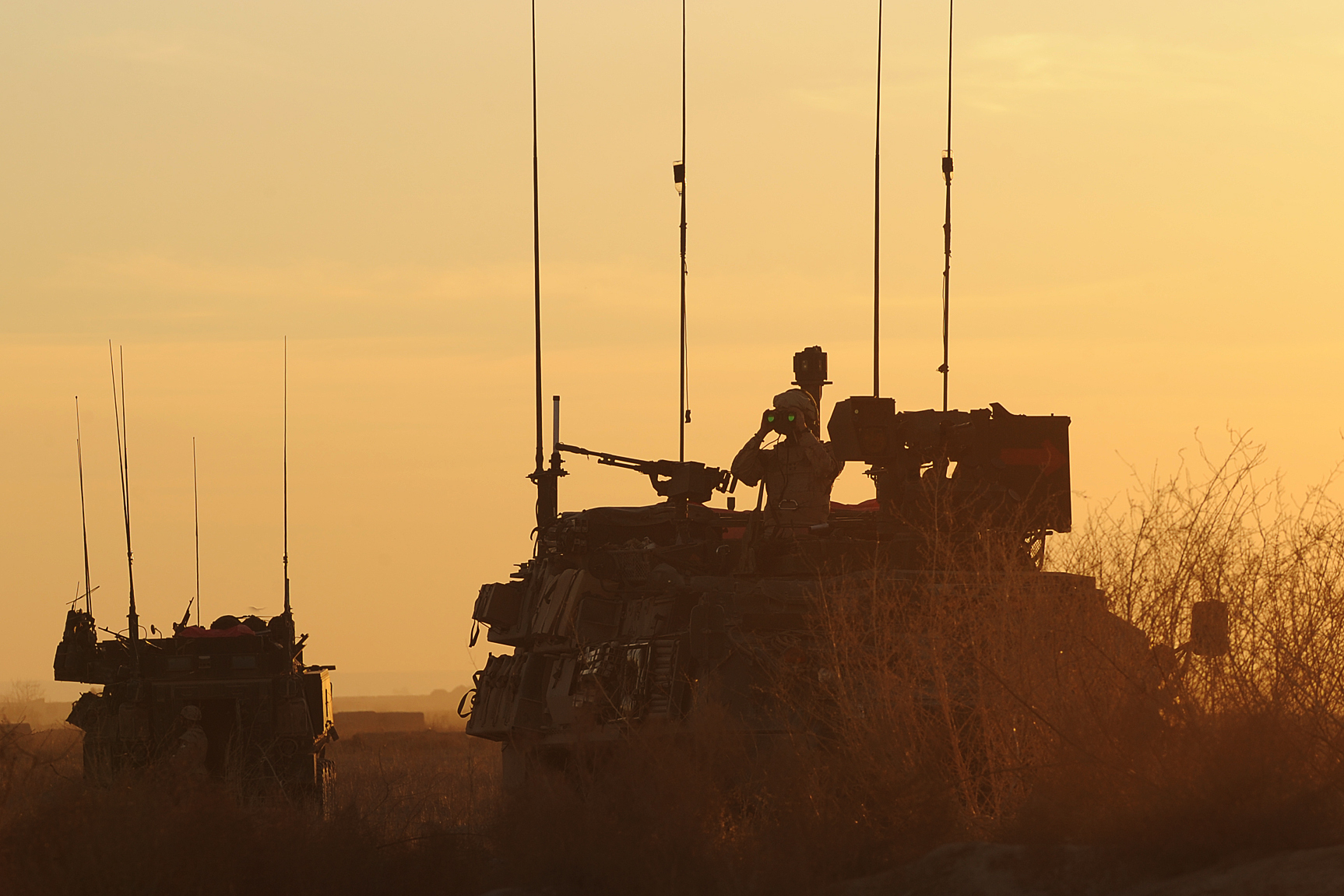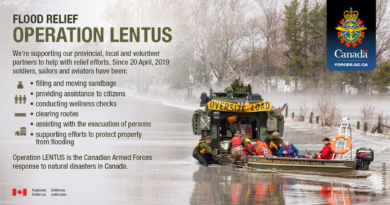Submission to the Defence Policy Review Roundtable
Submitted to the Defence Policy Review Roundtable in Halifax, NS, Canada held on June 28, 2016.
Canada is a trading state with economic and social links to all parts of the world. Whatever happens elsewhere, whether defence, security or safety related, affects Canadians. Canada, its CAF and other departments, need to be ready and capable, and ready in partnership with other states of engaging anywhere quickly and robustly for defence and security purposes.
(1) Activities in the modern world are complex, not just complicated, and so too are the resulting threats and the nature of responding military and security operations. Threats in space and cyberspace are not new. Confrontation and conflict are increasingly occurring in the legal (‘lawfare’), economic/financial, and public information areas – collectively the information domain. Threats in this domain are not getting due attention. The CAF should operate routinely in the information domain, especially with civil partners.
(1) Threats in the traditional land, sea, and air defence operating domains are increasing, returning to levels not seen since the Cold War. Robust maritime, land and air forces are still necessary. They should be completely interoperable with allies, particularly the US, and with coalition partners.
(1) The appropriate law enforcement and public safety agencies should be the lead responding to manmade and natural security and safety threats. The CAF’s support to those agencies, and to UN and coalition peacekeeping and peacemaking operations, is a natural outgrowth of its core combat capabilities. The CAF must truly focus on core capabilities, those of combat.
(2) Canadian domestic civil security and safety organizations are becoming increasingly capable and need less military assistance. The CAF can and should provide niche and integrating capabilities in support of civilian authorities, and should routinely plan and exercise with them. Support should not be at the expense of combat capability.
(3) Defence and security in the modern world is no longer geographically based but functional. To defend North America, Canada and the US must be well integrated in planning, training, exercises, operations, and staff exchanges. The two need to explore greater collaboration in the information domain.
(4) The best defence is to prevent the outbreak of conflict. Canada should be globally engaged, addressing the causes of conflict, with the CAF assisting by providing security in other states (e.g., training indigenous forces) whilst other arms of government (law enforcement, judicial, governance, etc.) build stability, resiliency, and prosperity.
(5) World defence and security conditions are continually changing. The size, structure, and composition of the CAF should be under frequent review – a continuing conversation. The point of balance of ‘balanced forces’ needs to be adjusted periodically to meet forecast, including and especially long range, threats. Logistics and long range transport assets need to be available for the CAF to deploy quickly.
RCN – global mid-size combatants and support forces to maintain a group episodically and single ships continuously, long-range Arctic-capable submarines, and patrol forces for regional missions
CA – mobile combined-arms units to maintain a group episodically, and elements for frequent exercises
RCAF – a fleet mix for regional air defence, strategic and intra-theatre transport, patrol, and support including air superiority and strike to maritime and land forces, thus agile and integrated with reach and power essential to CSF operations.
Special Operations – robust land, sea and air elements for multiple simultaneous missions
Reserves – must be useful, relevant and capable of supporting overall missions at home and abroad. They should be routinely deployed and employed at operational activities. There should be Reserve elements in more parts of Canada. They need to be relieved of the administrative burden and restrictions on activities, and ‘train to excite’ to attract and retain people.
(6) The CAF is a special and demanding sub-set within Canadian society. That point needs to be appreciated and supported by the government and public, even if it means treating military members differently. Members need to be considered and treated holistically throughout their careers and beyond.
(7) Reorganizing the CAF to focus on specific niche capabilities, which could only be employed as auxiliaries to foreign forces, makes our forces subject to uncertainty, with missions designed by others. It is difficult to determine, and easy to get wrong and render the CAF irrelevant, what niche capabilities are of use over many years. The CAF should be capable of operating across the spectrum of operations to lesser or greater extent, but particularly with innovative means to surge generate capability to address demands of any arising. The Reserve Force needs multi-role units to support any surge; for that it needs much more funding for training. The CAF needs to contribute to, not depend on, allies and partners. Interoperability is a must.
(8) Space, cyber and unmanned technologies have made and will make tremendous changes to defence and security capabilities. Canada needs to make substantial intellectual and financial investments in these areas, ensuring complete interoperability with allies. Defence and security must include the national coordination of cyber between governments and other sectors. Future military forces will be a human-computer-drone mix.
(9) Federal procurement would benefit from a whole-of-government, not just defence, etc., perspective. Without adversely affecting the department with the most to gain/lose, procurements in telecommunications, transportation, sensors, etc., should be multi-departmental. Speed and simplicity are still critical.
(9) A continuing and close relationship with the Canadian defence industrial base is important. Procurement should be innovative (e.g., lease, convert) and continuous enough to retain expertise within the DND and Canada.
(10) Canada needs, firstly, well-trained, equipped, innovative and unfettered people. Capable information technology resources are needed to exchange and leverage their knowledge and that of other departments, allies, partners and other peoples.
The CAF’s roles and their priority are unchanging. Defence of Canada is best done elsewhere, though elsewhere is different in the new domains. The CAF should be readily deployable (expeditionary elements should be a priority), and agile to change force structure and location to meet sudden arisings.
A military developed for peacekeeping cannot defend Canada. Development of the CAF must prioritize combat capability. The CAF should not be structured, equipped and trained as peacekeepers. To do so would limit the government’s options. A combat capable military can conduct capability and resilience building elsewhere in the world in support of the defence and security of Canada. There are no savings in being a peacekeeping military. Peacekeeping is an option offered to government by a military which has been properly funded, manned, equipped and trained for combat. The best peacekeepers are combat soldiers, sailors and air force men and women.
The DND and the CAF have huge investments in defence infrastructure and material holdings. These need to be closely reviewed and where possible reduced. ‘Agility’ includes being to change infrastructure readily, and to manufacture/repair more on-demand (e.g., by laser additive manufacturing).
In this rapidly changing technological world, defence and security need more resources devoted to R&D. DRDC should have more scientists and funding. A close S&T relationship must be maintained with NATO and other allies in order to remain collaborative and access current R&D.
The current submarine force is the basis for the necessary capability to operate (manned and unmanned vehicles) in the future in the open waters and under the ice of the Arctic. It takes a long time to develop the people, equipment and procedures. Submarines are superb intelligence and surveillance platforms, and cause for much uncertainty to potential adversaries. The next submarine force should be a public discussion.
Defence and security of the Arctic is best addressed through information exchange, capability development, infrastructure construction, multi-sensor surveillance, planning, exercises, and operations by all departments jointly. To be sovereign means to be present and active, to deter and respond.


